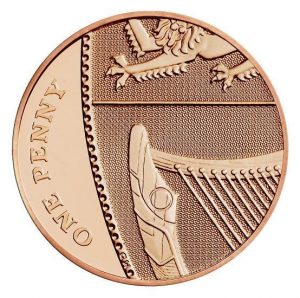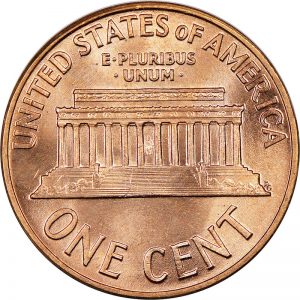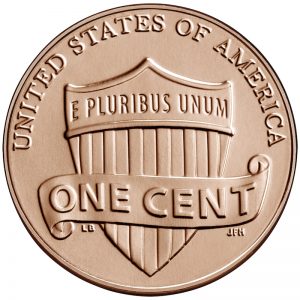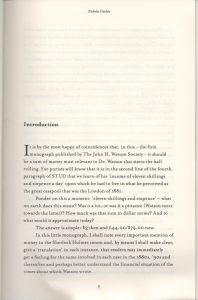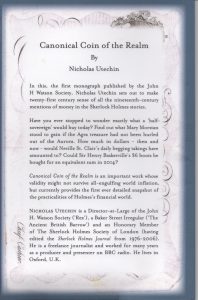Weekly World Numismatic News for January 16, 2022

The late Harvey G. Stack and Muriel Eymery, both inspirations in numismatics
Although they were of different ages, Stack and Eymery had similar philosophies. Both wanted to bring advancement to the hobby by expanding what people collected. Stack was one of the people who advocated for the 50 State Quarters program, and Eymery was an advocate for international collecting for collectors from all over the world.
It was not enough for both to look beyond their primary interests. Stack could have made a good living from his New York City store selling rare coins, holding auctions, and serving a high-end community without being involved in areas that would help the average collector. Eymery took her passion and made a career in several countries, including the United States and Hong Kong. She became an ANA Governor overcoming xenophobia because she spoke with an accent even though she was a U.S. citizen.
Both stepped beyond their comfort zone to help the hobby and should be role models for all of us. Stack and Eymery went beyond their self-interests to grow the hobby. They had their business interests, but they could think beyond an alleged correct way to collect for the sake of the hobby.
What will your legacy be? Are you going to leave the hobby static or grow it by creating a legacy that collecting is fun and does not have to be limited by plastic-encased coins or printed albums? Or will you embrace everything that the hobby offers, including areas you do not collect?
For the memory of Harvey Stack and Muriel Eymery, we should commit to leaving a legacy of progress and inclusion in the hobby that all of us want to grow and thrive.
And now the news…
 → Read more at spokesman-recorder.com
→ Read more at spokesman-recorder.com
 → Read more at marketwatch.com
→ Read more at marketwatch.com
 → Read more at theday.com
→ Read more at theday.com
 → Read more at bbc.com
→ Read more at bbc.com
 → Read more at cnn.com
→ Read more at cnn.com
Weekly World Numismatic News for October 6, 2019

Rebecca Clay Pippin’s husband Jason Pippin hangs the Coin Broker’s sign on their new storefront at 1604 Laurel St. in San Carlos. (Image courtesy of the San Mateo Daily Journal)
Meanwhile, in Worcester, Massachusetts, the owner of Lincoln Stamp and Coin Company announce the shop will be closing at the end of October. Owner David J. Ephraim cited that he could not continue to pay rent in Worcester, “operating on a slim profit margin, and collectors are an aging group, with few younger customers walking through the door.”
Both situations demonstrate the same problems with different solutions. Commercial rents are too high. Commercial insurance is too high. Security costs are too high. And many of these businesses are trying to survive on thin margins.
The Coin Broker solved its problem by moving to a new location. Although moving is time consuming, costly, and filled with emotion, the story makes it seem like they are ready to turn the page and continue.
For Lincoln Stamp and Coin, Ephriam is not as bullish on the market. His business does not see enough younger collectors, his regulars are either retired or dying, and those collecting are buying on the Internet.
Two stories with the same underlying problems. Two different solutions. But the hobby continues with one less place that collectors can go to buy coins.
And now the news…
The Bank of Jamaica (BOJ) estimates that at least J$100 million in one- 10- and 25-cent coins, the ‘red’ money, is ‘lost in circulation’ in the Jamaican economy, and has partnered with GraceKennedy (GK) Money Service in a recovery drive.  → Read more at jamaica-gleaner.com
→ Read more at jamaica-gleaner.com
A national treasure hunt has been launched, and Australia is very much at the centre. The coins are marked to celebrate all things iconic to Australia: the meat pie, a boomerang, Vegemite, and a Hills Hoist, just to name a few.  → Read more at katherinetimes.com.au
→ Read more at katherinetimes.com.au
Most people use banks as a place to either borrow money or store it. But some lucky coin enthusiasts have found a unique way to get money out of the bank: bringing home rolls of coins and searching through them for ones worth more than their face value.  → Read more at cnbc.com
→ Read more at cnbc.com
When Jim Beer opened the Coin Broker in Palo Alto’s Town & Country Village shopping center some 40 years ago, he was retiring as a civil engineer and looking to  → Read more at smdailyjournal.com
→ Read more at smdailyjournal.com
PM Narendra Modi released the commemorative coins of Rs 150 denomination to celebrate Mahatma Gandhiji’s 150 th birthday. The event took place in Ahmedabad, Gujarat on October 2, 2019 when the Prime Minister reached the Sabarmati Riverfront to participate in the proceedings of the Swacch Bharat Divas program.  → Read more at businessinsider.in
→ Read more at businessinsider.in
A steamship that sank in 1840 after colliding with another ship off the coast of South Carolina contains a trove of rare gold coins, according to the dive team salvaging the wreck.  → Read more at foxnews.com
→ Read more at foxnews.com
WORCESTER — The bidding board is still covered with coins and envelopes are full of stamps, but the buzz is gone from Lincoln Stamp and Coin Co. The venerable business that was once the place to go for people looking for a special stamp or unique coin, is selling off its inventory and closing its doors, probably for good.  → Read more at telegram.com
→ Read more at telegram.com
Metal detectorists have made many amazing discoveries down the years in Britain, with a great hoard of 2,600 coins just revealed last month. But there are strict rules regarding archaeological finds made by detectorists.  → Read more at ancient-origins.net
→ Read more at ancient-origins.net
September 2019 Numismatic Legislation Review
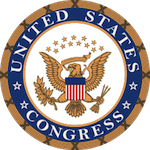 The numismatic industry is all a buzz about a pending new commemorative coin. When signed by the president, the Christa McAuliffe Commemorative Coin Act (S. 239) will create the first commemorative coin for 2021.
The numismatic industry is all a buzz about a pending new commemorative coin. When signed by the president, the Christa McAuliffe Commemorative Coin Act (S. 239) will create the first commemorative coin for 2021.
The bill calls for a maximum of 350,000 silver dollar commemorative coins in memory of Christa McAuliffe, the teacher killed as part of the Space Shuttle Challenger disaster.
Congress sent the bill to the White House on September 27, 2019. It is waiting for a signature which should happen soon.
S. 239: Christa McAuliffe Commemorative Coin Act of 2019
This bill and the Women’s Suffrage Centennial Commemorative Coin Act (S.1235) were being held at the desk in the House because of an objection made by a freshman member. The member was convinced to let the bills pass and to use other bills to make the point.
Just a typical day on Capitol Hill.
H.R. 1830: National Purple Heart Hall of Honor Commemorative Coin Act
H.R. 4332: Paul Laurence Dunbar Commemorative Coin Act
Weekly World Numismatic News for September 29, 2019
While reading the news from around the world, it is easy to understand why numismatics is not well received in the United States. Compared to numismatic-related articles from countries like the United Kingdom, France, and India, U.S. reporting lives down to the reputation that politicians claim.
For example, in The Trentonian, the newspaper of record for Trenton, New Jersey, columnist L.A. Parker wrote an opinion piece that calls for the elimination of the “penny.” Although the article reads like Parker was trying to add a little snarkiness, his premise lies flatter than a coin.
If Parker were a proper journalist, he would recognize that the article contains one significant mistake that ranks high on my pet peeve list. The lowest denomination coin produced by the U.S. Mint is the CENT. While it is colloquially called a “penny,” the penny as the lowest denomination of the British coin system.
The difference is clear. If one looks at the reverse of the two coins, each has their denominations spelled out.
- British pre-decimalization Penny
- The reverse of a 2018 U.K. One Penny coin
- Lincoln Cent Wheat Ears reverse
- Lincoln Memorial Cent
- Modern Lincoln Shield Cent
Lately, the U.S. Mint has been adding to the confusion by using the word “penny” instead of “cent.” The significant abuser appears to be U.S. Mint Director David Ryder. While previous directors and acting directors have been careful with the name, it seems to have loosened its language since the appointment of Ryder. Ryder should know better since this is not his first appointment to the U.S. Mint.
Adding to the confusion in Parker’s article, he cites statistics in favor of the cent that was compiled by Americans for Common Cents. Americans for Common Cents is a lobbying organization dedicated to preserving the United States’ lowest denomination coin.
According to Parker, “Pennies no longer matter.” If the one-cent coin no longer matters, then why does the U.S. Mint produce over 13 billion of them each year?
The primary client of the U.S. Mint is the Federal Reserve. Every year, the Federal Reserve places an order for the U.S. Mint to produce coins for circulation. Although the order can be updated during the year, the Federal Reserve rarely requests few coins. It means that the U.S. Mint manufactures coin the Federal Reserve will buy.
The U.S. Mint does produce coins for the collector market. But in comparison to their circulating coin production, the numismatic market is tiny.
Naturally, this leads to wondering if the coins no longer matter, then why is the Federal Reserve asking the U.S. Mint to manufacture and deliver over 13 billion coins?
And now the news…
Two women have designed a commemorative coin to recognize 100 years since the Boll Weevil monument was erected. Enterprise high school Quarterbacks club secretary Judi Stinnett got the design idea from a coin she received at the Diamond Jubilee over 60 years ago.  → Read more at wtvy.com
→ Read more at wtvy.com
The South African Mint Company are doing something a little different to celebrate 25 years of democracy in this country. So what better way to commemorate “power to the people” than by handing them control of what should appear on the new R2 coin?  → Read more at thesouthafrican.com
→ Read more at thesouthafrican.com
Nassau County District Attorney Madeline Singas announced that a coin dealer from Fort Salonga was arraigned for a $330,000 cross-country coin consignment and sale scheme that targeted coin dealers and private collectors from California, Michigan, Ohio and Long Island.  → Read more at longisland.com
→ Read more at longisland.com
A builder is celebrating after finding a huge haul of 1,000-year-old silver coins worth £50,000 – including one from Lincolnshire which experts have never seen before. Don Crawley, 50, was searching for buried treasure in farmland using his metal detector when he discovered the haul.  → Read more at lincolnshirelive.co.uk
→ Read more at lincolnshirelive.co.uk
(Image: © FIRST/Jack Kamen/NASA via collectSPACE.com) The United States Mint will memorialize the first teacher who launched toward space with a new coin that will help continue her mission of science and technology education.  → Read more at space.com
→ Read more at space.com
Have only seven red cents to my name and soon a self-description will employ penniless as identification. Not ready for the poorhouse though as poor mouth expressions mean only that all pennies have been removed from jars, drawers and a car console.  → Read more at trentonian.com
→ Read more at trentonian.com
AN EXTREMELY rare copper coin marking King Edward VIII's short reign has sold for a record price of £133,000. The Edward VIII 1937 Pattern Penny was created as a trial coin by the Royal Mint ahead of his coronation in the same year.  → Read more at thesun.co.uk
→ Read more at thesun.co.uk
Lori Ann Lewis was doing charity work in downtown Orlando when, by chance, she ran into someone who worked in the gold business. It was in the lobby of the Seacoast Bank skyscraper in 2016, just before the presidential election, when she met Susan Kitzmiller, an employee at U.S.  → Read more at orlandosentinel.com
→ Read more at orlandosentinel.com
The Bank of Jamaica (BOJ) estimates that at least J$100 million in one- 10- and 25-cent coins, the ‘red’ money, is ‘lost in circulation’ in the Jamaican economy, and has partnered with GraceKennedy (GK) Money Service in a recovery drive.  → Read more at jamaica-gleaner.com
→ Read more at jamaica-gleaner.com
Canadian Bank Refused Deposit of Coins
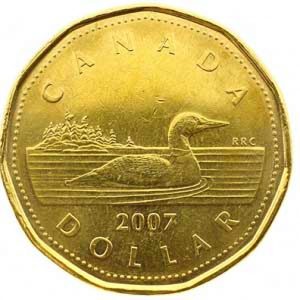 The Canadian Broadcast Company reported that a bank in Montreal refused the deposit of $800 in rolled coins.
The Canadian Broadcast Company reported that a bank in Montreal refused the deposit of $800 in rolled coins.
Julien Perrotte saves the coins he receives in change. Every year he will sort and roll the coins so that he can deposit them into his account at Laurentian Bank. This year, the bank told Perrotte that it was a new policy not to accept coins.
Canadian laws do not require banks to accept all legal tender coins or currencies. They can refuse to take any form of specie and only operate using electronic funds.
Laurentian Bank has taken advantage of these laws and no longer employ human tellers to accept cash. Customers can deposit currency and checks in their automated banking machines. The machines do not accept coins.
Before people begin to criticize Laurentian, this is starting to occur in the United States. Banks and other financial institutions are beginning to offer checking and other consumer banking services accessible online. They do not have branch offices.
The largest and most successful of the online banks is Ally. Anyone can open an Ally account and have access to the full line of banking services except you cannot deposit cash.
Then there are banks with physical presences that are transitioning to a model like Laurentian. Capital One Bank entered the consumer banking business when it started buying smaller banks in 2005. Today, Capital One is closing branches and consolidating teller operations in Capital One Cafes. Customers that do not live near Capital One Cafes can deposit currency and checks via an ATM but cannot deposit coins.
Does this mean we are heading toward a cashless society?
No! It means that the United States has an economy diverse enough to support new ideas in banking services while maintaining traditional banking operation. It is because the United States has a diverse economy that includes a cash-based transaction (see here and here) that will prevent our society from going cashless.
Rather than try to deal with Laurentian Bank’s new policy, Perrotte said he will be taking his business elsewhere.
REVIEW: Coin of the Canonical Realm
During the unpacking of an estate, I came across a book with the title Coin of the Canonical Realm. It is a short, 58 pages, paperback book that has an intriguing cover. As a coin collector, I started to thumb through the book to get a sense of its purpose. Since it was not apparent, I had to wait until later.
After cleaning off my desk, I found the book and decided to read the Introduction to understand the book’s purpose. According to the introduction, its purpose is to “21st century sense of all the 19th century mentions of money in the Sherlock Holmes stories.”
Sherlock Holmes was a fictional detective created by Arthur Conan Doyle. Doyle created Holmes as a “consulting detective” so that the character can appear in varying environments. Doyle was one of the first authors to create a crime-fighting character that includes all of the tools that we take advantage of today. Someone suggested that Mission: Impossible is a modern extension of the Sherlock Holmes stories.
Most of Doyle’s stories are written from the perspective of John H. Watson, M.D. as Holmes’ biographer. Watson is a friend and part-time roommate who accompanies Holmes on his investigations. Watson can be annoyed with Holmes on some of his actions while being intrigued by his actions.
During his life, Doyle wrote 56 short stories and four novels about Sherlock Holmes. The short stories are compiled in five books which I have read three of them. All of the Sherlock Holmes stories are highly recommended.
The Sherlock Holmes stories endured long after Doyle’s passing in 1930. Aside from the movies and other new media recreations, there are societies dedicated to studying the intricacies of Holmes, the crimes, and other characters Doyle included. One of those organizations is The John H. Watson Society.
The John H. Watson Society, founded in 2013, is described as an organization that will study Dr. Watson as a unique individual and how his character enhances the Doyle classics. Watson, whose background is revealed throughout the stories, is a renown physician with a heroic war record and trust by a community is leery of the medial arts.
The book, written by Nickolas Utechin whose biography describes himself as having a long history with studying Sherlock Holmes, is the first monograph published by the John H. Watson Society.
Starting from Chapter 1, Utechin copies one or two-line passages from Doyle’s writings that reference money then explains them in the context of the 21st-century. He first describes the old British monetary system where there were 240 pence to a pound including the varying minor coins that were in use at the time. (See this post for a description of the old British monetary system)
Each of the chapters covers the five volumes of compiled short stories and then four chapters for each of the novels. Although you can get the gist of what Utechin writes about, it is best to use this booklet as a companion while reading a Sherlock Holmes story.
Having this explanation while reading one of the short stories adds a different perspective to the story. For those who have not read a Sherlock Holmes story, I would recommend that you first read the story without consulting this booklet. On your second reading have this booklet nearby to help you put the story into perspective.
Some may consider Coin of the Canonical Realm a supplemental study guide to Sherlock Holmes. Whatever you want to call it, fans of the stories may find it adds to their enjoyment.
If you are interested in owning a copy of Coin of the Canonical Realm, you can order it directly from The John H. Watson Society.

